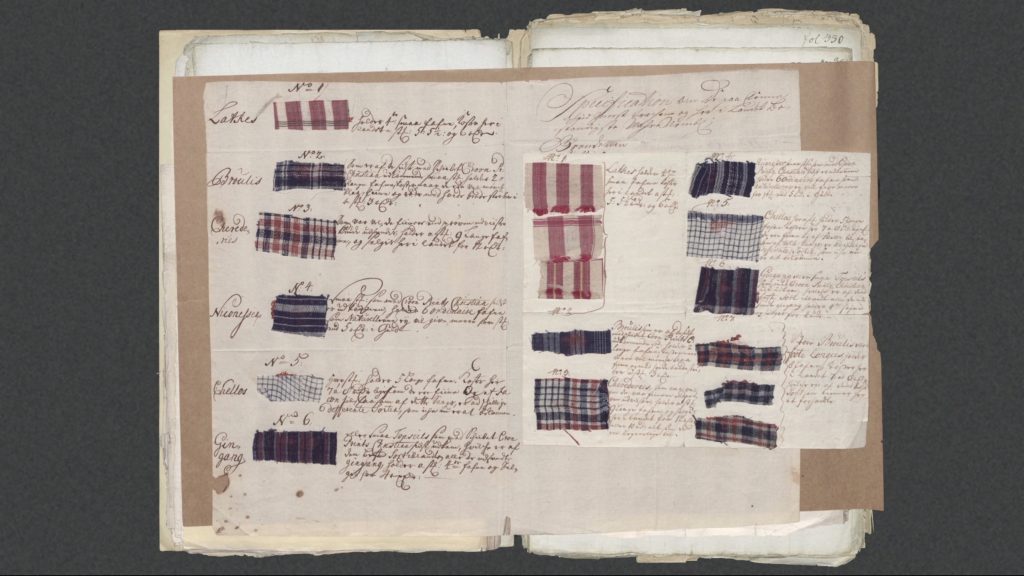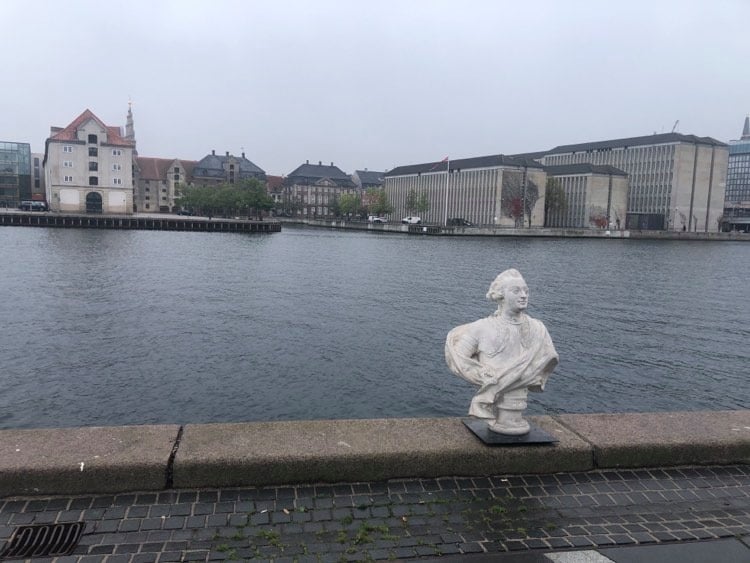The firing of an artist from Denmark’s top art school after she staged a provocative happening has rocked the Danish art world.
Katrine Dirckinck-Holmfeld lost her job when she took a replica bust of the 18th-century King Frederik V from the Royal Danish Academy of Fine Arts, where she was employed, and dumped it into the Copenhagen canal.
The action, which she called a “happening,” was initially carried out anonymously. She was removed from her post the day she came forward as the responsible party.
The event and its fallout, which quickly spilled out into the mainstream Danish media, has divided opinion in the Scandinavian country and ignited discussions about colonial legacies and the limits of artistic expression.
Critics from across the political spectrum have weighed in. On Friday, an open letter was published in defense of Dirckinck-Holmfeld, demanding she be reinstated. It has since been signed by 800 cultural workers, artists, and others. Meanwhile, the artist says she has become the victim of hate speech.
“We do not perceive the action as an attempt to eradicate Danish cultural heritage, but as an attempt to activate it,” its authors wrote.

Royal Danish Academy of Fine Arts is housed in the Charlottenborg Palace in central Copenhagen via Wikimedia Commons.
The event, which took place on November 6, was recorded in a lo-fi video showing the bust being bagged over the head, dismantled, and tipped into the canal outside the school. It was carried out by the group Anonymous Artists before Dirckinck-Holmfeld stepped forward.-^
“The Royal Danish Academy of Fine Arts’ founder has been thrown into the harbor,” states the text accompanying the video, adding that the action was carried out in “solidarity with all the artists, students, and people all over the world who have had to live with the aftermath of Danish colonialism.”
Frederik V, king of what was then Denmark–Norway in the mid-1700s, founded the school and has enjoyed a relatively unscathed posthumous reputation, despite benefitting from the slave trade.
The art school’s rector, Kirsten Langkilde, has defended the firing and denounced Dirckinck-Holmfeld’s action as “criminal.” “One cannot claim to be above the law under the pretext of creating art,” she said.
In a statement, the school did not mention that the bust was a plaster cast dated to the 1950s. The 1766 original bronze work is still in the Kunsthalle Charlottenborg, the exhibition gallery attached to the school. The Royal Danish Academy of Art declined to provide additional comment.
Other critics of Dirckinck-Holmfeld from within the art world have suggested her act has extreme implications. “History has shown time and time again that fascists practice on art before passing it on to humans,” Marete Jankowski, director of the at Overgaden Institute for Contemporary Art, wrote in an article for the Scandinavian art publication Kunstkritikk.
In an interview with Artnet News, Dirckinck-Holmfeld said her act was directly inspired by other takedowns of monuments, including that of slave trader Cecil Rhodes in Oxford. She said the real danger was in not interrogating systems of power.
“Such a symbol should not be glorified by a contemporary education institution which ought to be studying, questioning, and challenging the structures of power symbolized by the bust of Frederick V,” she said. “In Denmark, there has been little to no engagement with legacies of colonialism and slavery in today’s cultural and educational institutions.”
At its peak, Denmark’s colonies were peppered across four continents, from the Danish West Indies, in the modern-day US Virgin Islands, to the Danish Gold Coast, now a part of Ghana. Its holdings also included Greenland, which remains part of the Kingdom of Denmark, and parts of India.

Christmas Report & Other Fragments by Katrine Dirckinck-Holmfeld 2017. Courtesy the artist.
Artist Melanie Kitti, who organized the open letter in support of Dirckinck-Holmfeld, said her action was part of essential political work.
“As a person of color in Scandinavia, and in the art world in particular, I have direct experience with the consequences of colonialism and racism,” she told Artnet News. “Still to this day, you will find people who are unaware that the King of Denmark owned slaves. For me, it is important and heartwarming to see faculty like Katrine Dirckinck-Holmfeldt use their platform and teach about these themes. It gives me relief and hope that people of color do not stand alone in this struggle.”
Folded into the debate are questions around the limits of artistic expression, which have been the subject of recent legal proceedings in other parts of Europe.
In France last month, the activist Mwazulu Diyabanza was acquitted for taking an object from a museum in Marseille to raise awareness about restitution. The court found his protest constituted freedom of speech.
At another trial in Paris, Diyabanza was given a small fine as his lawyers argued successfully that his act was symbolic, and therefore could not be considered theft.
In Dirckinck-Holmfeld’s case, a police investigation is now underway. In the meantime, she said she hopes the performance prompts the Art Academy into a discussion about colonial legacy.








